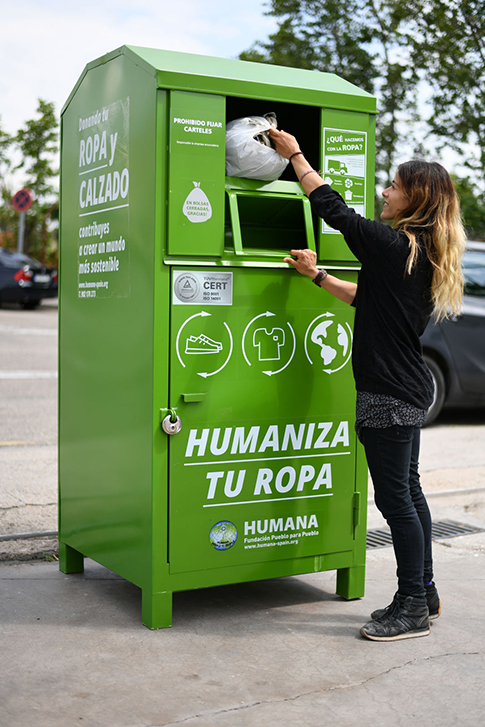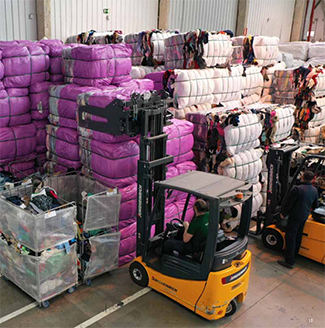consent_cookie
Duración: 1 year
Stores the user's cookie consent state
SELECTIVE COLLECTION OF TEXTILE WASTE
Humana is the pioneering entity in Spain in terms of selective collection and sustainable management of textile waste, with the aim of achieving maximum use of it to turn it into a resource for social purposes. After 38 years of activity, it has established itself as a relevant player in the social economy.
Since 2025, selective collection of textile waste is mandatory throughout the European Union. Therefore, we are faced with an opportunity and an enormous challenge to give the final push to the appropriate management of this resource, faithful to the waste hierarchy and a circular economic model, in which the reintroduction of textiles into the production chain takes priority, prolonging their life cycle.
Currently, Humana has 5.450 containers for the collection of textile waste, distributed in the autonomous communities of Andalusia, Asturias, Cantabria, Castilla-La Mancha, Castilla y León, Catalonia, the Valencian Community and the Community of Madrid. More than 19,000 tons of used clothing are collected annually.
PREPARATION FOR REUSE
The Foundation has 2 Textile Waste Preparation Plants for Reuse in Leganés (Madrid) and l’Ametlla del Vallès (Barcelona) where a team specialised in handling and selecting garments, made up of more than a hundred people, works.
The Leganés Plant has two areas that together represent the largest facility in Spain dedicated to preparing textile waste for reuse, with 12,000 metres. 9 out of 10 garments would have a second life through their reuse or recycling. The Waste Management Hierarchy established by the EU is the framework within which this recovery work is carried out.
Used clothing that we do not have the capacity to process is sold directly to textile recycling and reuse companies.
The management process follows the specifications on collection and preparation for reuse of EuRIC TEXTILES, an entity of which it is a part through the Spanish Federation of Recovery and Recycling.
Once in our plants, it is subjected to a classification process that is carried out by professionals specialised in textile reuse.
TRACEABILITY
Humana has the certificate from the independent consultancy Mepex that accredits the traceability of the textile waste processed in its preparation plants for reuse in Madrid and Barcelona.
The Textile Transparency Report that accompanies this certificate shows that 63.5% of the textile waste processed by Humana is reused as secondhand products, either in Spain or globally.
You can find complete information here.
The distribution of processed textiles in 2024 was as follows:

